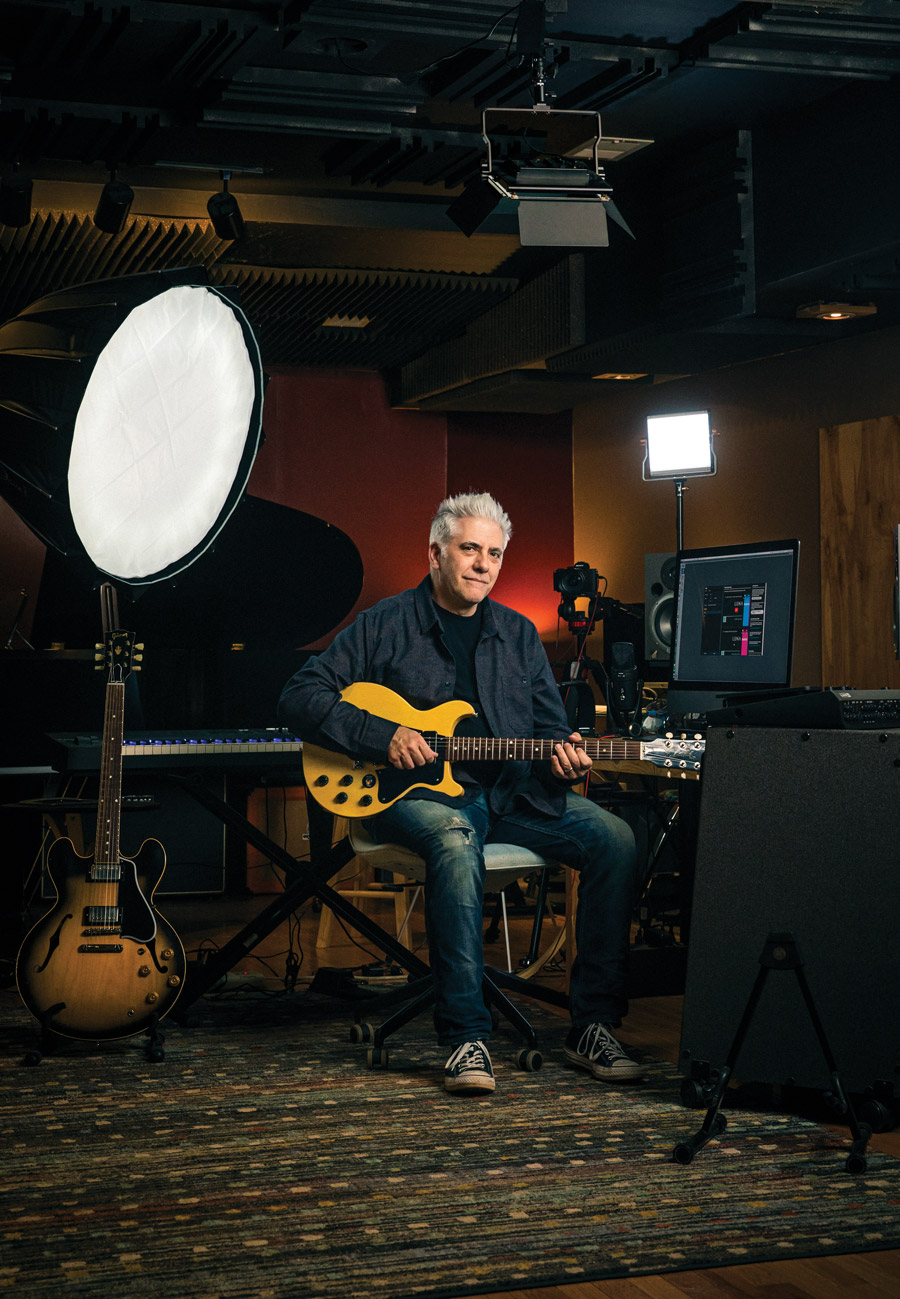
Photograph by Audra Melton
When an intern suggested to music producer Rick Beato that he start a YouTube channel, he was skeptical: Nobody’s going to watch an old guy with white hair on YouTube. But the intern, Rhett Shull, was convinced Beato and his 25 years of audio-engineering experience would be a hit—and he was right. One year and 340 videos later, Beato quit his day job to become a full-time YouTuber. Today, from his music studio in Stone Mountain, the 58-year-old posts new content a few times a week for 2 million subscribers and counting.
At first, the channel centered on how to play a few instruments, composition, and improvisation; it was mostly instructional—not surprising, as the New England Conservatory of Music grad spent much of his 20s as a music professor at Ithaca College. Those days instilled in him a love of teaching, and his YouTube how-tos take him back to those roots. “I’ve been very lucky to have a great music education,” he says. “I wanted to pass it along to other people that aren’t as fortunate as I was.”
As his popularity grew, Beato kept his laid-back, conversational style—sporting his signature black T-shirt and slicked-back hair—but his content evolved. His most popular series now are his countdowns, like the “Top 20 Acoustic Guitar Intros of All Time.” (Spoiler alert: Led Zeppelin’s “Stairway to Heaven” is number one.) In his “What Makes This Song Great” series, Beato dives deep into the musical components of hits from classic rock bands like Rush and Metallica and alternative bands like System of a Down. He breaks down Blink-182’s “All the Small Things,” demonstrating how the octave synthesizer played in the chorus creates a hidden dissonance against the G power chord: “Your ear doesn’t notice it because it’s so low in the mix, but that’s what pulls at your heartstrings and really makes the tune have that angst right in that moment,” Beato explains.
In a comment under Beato’s dive into the 1976 classic “Kid Charlemagne” by Steely Dan, a fan wrote, “I don’t know an E minor 7 from a hole in the ground, but I know good music when I hear it. And the Dan made some of the best.” And that’s the point. You don’t have to be well-versed in music theory to be captivated as Beato dissects the alternating time meters in Rush’s “Limelight” or the distinctive chords of Radiohead’s “Paranoid Android.”
“I try to make it where things are fun and interesting,” Beato says. “My goal is to make videos for people that don’t know anything about music.”
This article appears in our February 2021 issue.











![The North Carolina Museum of Natural Sciences’ newest exhibit is a [pre]historic first](https://cdn2.atlantamagazine.com/wp-content/uploads/sites/4/2024/04/DD-3-100x70.jpg)


